#pasifika literature
Explore tagged Tumblr posts
Text

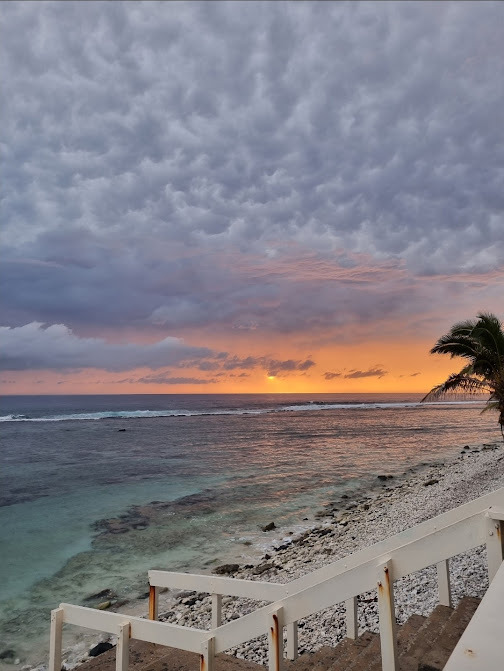
Rarotonga (from the sky, from the sea), 2022 Pinterest: yourladysteel <3
#photography#aesthetic#art#grunge#literature#yourladysteel#cottagecore#dark academia#light academia#mine#naturecore#cozycore#cozy#cottage aesthetic#island#rarotonga#pacific ocean#pasifika#island girl#moodboard#sunset#sunrise#clouds#pretty skies#pretty sky#oceancore#ocean#ocean view#sea#water
87 notes
·
View notes
Text
so im& not even american but now with the censorship that's going on there, i& think it's vital that we& spread information & literature about black history, indigenous history, native history latine history, asian history, pasifika history, jewish history, queer history, intersectional women's history & disabled history & how it all intersects each other, because i've& been saying for years that our oppression & fight are all interconnected with each other, arguably now more than ever before.
7 notes
·
View notes
Text

Aloha kākou! ✨ I kēia mahina, e heluhelu kākou i The History Of The Steel-Tipped Pen: Reconstructing Native Hawaiian Intellectual History na Noenoe K. Silva. Hey everyone! ✨ This month, we will be reading The History Of The Steel-Tipped Pen: Reconstructing Native Hawaiian History by Noenoe K. Silva. Search and you will find the history of our people through stories, poems, songs, and so much more 💫 Are you familiar with Native Hawaiian Intellectual History? What are you excited to learn about? 😎
#KanakaMaoli#UHManoa#UHPress#Indigenous#Pasifika#NativeHawaiian#Hawaii#OleloHawaii#Native#KaiReadingClub#PowerOfTheSteelTippedPen#NoenoeKSilva#booklr#tumblrreads#bookish#readers of tumblr#literature#academia#currentlyreading#wanderlust#aesthetic#pasifika#bibliophile#books#bookclub#readingclub#indigenous#igreads#bookstagram
8 notes
·
View notes
Note
the link on the "books by pacific islanders" post you reblogged is broken :(
nooo that's such a bummer, it had such a great list that didn't just include polynesian authors, but also from all of pasifika/oceana! :(
i'll add some book reccs myself based on the original post! :)
Iep Jaltok: Poems from a Marshallese Daughter by Kathy Jetn̄il-Kijiner
As a poet and performer, Kathy Jetn̄il-Kijiner uses art and activism as a means to enlighten her readers and followers about her home, the Marshall Islands. In 2012, she co-founded Jo-Jikum, a nonprofit organization committed to helping the next generation of Marshallese to preserve their islands in the face of rising sea levels. Her book, Iep Jaltok: Poems from a Marshallese Daughter, pulls from personal and familial stories to create an illuminating collection of poetry about Marshallese politics, heritage, and climate change.
THE BONE PEOPLE by Keri Hulmes is part Maori, part European, asexual and aromantic and she's outcasted from her family. This Booker Award-winning novel digs into tragic romance, mystery and heritage.
ISLAND OF SHATTERED DREAMS by Chantal Spitz; critiques the French government leading to the time French Polynesia had to undergo its first nuclear tests, making it a controversial piece during its publication. Also included in the storyline is a family saga and a doomed love story.
YEAR OF THE REAPER by Makiia Lucier (Micronesia, Guam). Makiia Lucier grew up on the Pacific island of Guam and has degrees in journalism and library science from the University of Oregon and the University of Wisconsin-Milwaukee.
The Properties of Perpetual Light is an homage to the work of the activist-writer, which author Julian Aguon describes as ''the work of bearing witness, wrestling with the questions of one's day, telling children the truth.'' With prose and poetry both bracing and quiet, Aguon weaves together stories from his childhood in the villages of Guam with searing political commentary.
My Urohs: the first collection of poetry by a Pohnpeian poet, Emelihter Kihleng's My Urohs is described by distinguished Samoan writer and artist Albert Wendt as "refreshingly innovative and compelling, a new way of seeing ourselves in our islands, an important and influential addition to our [Pacific] literature."
6 notes
·
View notes
Note
Hi! First of all, thank you so much for your post about the maori cultural influences in Taika's work, it was really interesting! The only work about maori culture that I was familiar with is a film called Whale Rider that I watched for a university class years ago. Is it considered like a staple in New Zealand or was it one of those films that are more popular abroad? (Also sorry for my English)
oh Whale Rider is one of my all time faves forever (also im pacific islander but not māori. it’s just their media has a large impact on the rest of us in poly/micro/melanesia so im not speaking as a native/local to nz but as a fellow pasifika)
it’s def a staple in the pacific, and not just for how much critical acclaim the film received, but bc the production was sooo Māori (even tho Niki Caro the director isnt, she was born and raised in NZ, committed to telling the story with respect). it was a big deal to make an adaptation of Witi Ihimaera’s novel bc he’s one of the pioneers of Māori literature. the fact that the producers were very intent on shooting in the real settings of the book, casting iconic Māori actors, and then finding a Māori lead like Keisha Castle-Hughes who would end up being, at the time, the youngest ever to be nominated for the best actress oscar (and def the first pacific island woman to be nominated). so yea idk it was huuuge and remains a staple bc it’s an excellent film but also was a massive cultural moment for Māori art and pacific island stories as a whole.
25 notes
·
View notes
Text
English 527 - Aromatawai 1: Report
Last year I was a teacher aide at a secondary school in Wellington and had the opportunity to assist some teachers in their English classrooms. One class that I will never forget was a class in which the Pākeha teacher used Māori throughout her lessons. The lessons would always start with a karakia, which a volunteer student would lead. This in itself built public speaking confidence as students within the classroom thought "if my friend can do it, so can I.” This school is a reasonably multi-cultural school but the majority of students are Pākeha. Even so, this did not change the teacher's priorities around speaking te reo in the classroom and embedding it into the curriculum.
Keeping this example in mind, I think it is really important to learn how to respectfully integrate Te Reo and Tikanga Māori into the classroom. In terms of the English classroom, this could include a karakia at the beginning of each class, like this teacher had, as well as worksheets that enabled students to do English curricular activities with Māori words alongside them. However, this was a year 9 class example so I am unsure as to how this teaching would progress with the older year groups. Another significant part of this teachers commitment to Te Reo and Māori Tikanga was allowing students to immerse themselves in Māori culture through storytelling. I think it is important to teach at least one Māori novel or text if not more in the classroom. Not only is it important in terms of respecting our commitment to Te Reo and Māori Tikanga but it is also important for the acknowledgement of our bicultural society. By reading/watching New Zealand novels/films, we are enabling students to connect to their cultural identity.

It is also important to have high expectations for our students as we have no idea if they are receiving this kind of support and acknowledgement at home. Even if they are, expectations of success voiced by a teacher mean a lot regardless. By having high expectations we are also creating a positive relationship with our students. Simply put, if we believe they can succeed so will they. This is particularly relevant to Māori and Pasifika students who are already facing inequity in education because there is a racially prejudicial socially constructed idea that they are lazy, naughty and unable to achieve academic success. As Christine M and Rubie-Davies discuss, in Educational Psychology Concepts, Research and Challenges, there is a societal view that Māori students do not achieve as well as Te Tiriti when it comes to academic subjects and because of this, we focus on this negative aspect rather than simply believing that they can achieve great things in academia. That is why it is so important to have high expectations for all our students. Especially in a subject like English where it is important for further academic endeavours.

Coherence is also an important principle of good learning design. In this digital age, we can expand the English curriculum into other curriculum areas. English teachers can make links within and across learning areas and open up pathways for further and different ways of learning. Use of digital learning is an important example of this as it enables us to introduce different ways of interacting with literature. We need to overcome the “fear that reading and writing are “dying” in the face of new digital media…Reading and writing are, if anything, increasing in the digital world” (James Paul Gee, Elisabeth R. Hayes). If we involve digital technology within our teaching we can broaden how students connect to the course material. As teachers, we may see new ideas and interpretations appearing through students exploration of video, podcast and performance creation. There are many ways we can get students to accomplish indicators in the curriculum without having to stick to the normal recipe of essay and exam work. One of my favourite parts of the English curriculum, when I was in high school, was creating static images.

These learning sequences have shown me how important scaffolding lessons are. By breaking the curriculum into smaller activities, things start to slowly make sense for students and they do not feel overwhelmed by the material. In “Know the Learner” I thought the simple act of asking students what words they already recognised and then going over them as a class was incredibly effective. It allowed the students to feel as though they had agency in their learning as they were able to share prior knowledge and feel as though they had something to bring to the class. They were then asked to use these words in sentences to further their understanding. Even though this is quite a simple activity to implement I thought it was a nice way to help students learn vocabulary that they were unfamiliar with. This is better than students feeling as though they aren’t smart enough because they have to ask or look up what words mean.
I also thought that Maggie Trapp's inclusion of student technology into her lesson, even though it was just for one question, was a nice connection to the students. By asking them to choose a Spotify song that represented the character they were discussing, they were able to use an app they use every day and look at music for characterisation. I can see activities like this leading into exploring staging and how music influences visual storytelling, specifically soundtrack. However, There was not enough use of technology in these English lesson sequences. I think teachers are still unsure of how to implement technology into the curriculum. Something important to acknowledge is that students now have easy access to information online and therefore should be given agency to explore this information. However, with that in mind, there is so much information available to us that one of the most important things we can equip our students with, in any subject, is the use of critical thinking.“Relatively quick access to a wide range of information means that the user needs the ability to critically evaluate the validity and relative value of information accessed” (Louise Starkey). No longer are students given every piece of content for a particular lesson, like in the “Know the Learner” sequence, they are now given agency to find their own information. We should keep in mind that this can have negative implications simply because sometimes the sheer amount of information can be overwhelming. Rather than forming their own critical thoughts about written or visual texts students might head straight to the online study guides. I think we need to use more technology in the English classroom but also learn what this means and how to balance its use.
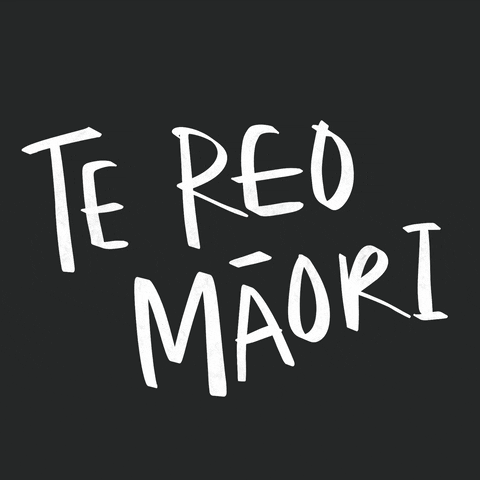
One extremely important way that I can develop my practice is to invest my time into learning te reo Māori and implementing this in the classroom. Furthermore, I appreciate the collaborative and caring learning culture that these learning sequences seemed to create through group work. Collaborative group work seems like a great way to get students to support one another and create an environment in which everyone feels important. I would try to implement group work in the classroom at least once every lesson. I also think that individual work is important as it allows the teacher to spend extra time with students who may need it. I really appreciate the well thought out examples of scaffolding given by the learning sequences. This made me fully understand the importance of thorough lesson planning.
1 note
·
View note
Text
Discussion
“Disentangling the effects of age structure and comorbidity on COVID-19 infection fatality rates is difficult because international literature to date is mostly limited to univariate analysis. Also, estimates from China of the impacts of comorbid conditions are not stratified by age. Furthermore, the list of health conditions impacting on COVID-19 infections continues to be updated as the pandemic develops, with additional conditions being added. The current modelling has been limited to the list of conditions included in the study from China CDC (2020). The data from which the baseline IFRs are calculated are adjusted for under-reporting, bias towards testing more severe cases, and lag time from onset to clinical outcome (Verity 2020). Nevertheless, there may be other biases and sources of inaccuracy not accounted for. We assumed in our model that the overall IFR was fixed at 0.87%, but there may be country-specific variations in IFR, and potentially higher IFRs in countries with large ethnic minority or Indigenous populations. Therefore, the IFR results discussed here should be treated as a preliminary estimate of relative differences between ethnicities, rather than predictions of the absolute IFR.
We calculated IFRs for each ethnicity group using two different methods using the currently available New Zealand data on four underlying health conditions and smoking. This gives an approximate range of possibilities for the IFR for each group. The methodology we have used makes relatively crude adjustments to IFRs based on differences in life expectancy, unmet primary healthcare need, and prevalence of comorbid conditions. This methodology should be refined over time, particularly as more data become available on COVID-19 cases in New Zealand. An alternative approach would be to use standardised metrics such as disability-adjusted life year (DALY) and years lost due to disability (YLD) to infer IFRs by age and ethnicity in New Zealand from the Chinese data. This approach should be tested, however it is possible that the true magnitude of inequities are not captured in these metrics and the data on which they are based, so there is a risk that this approach will underestimate the health burden for Māori and Pasifika.”
Study mentions that even though these are predictions/estimations, and that we need more date to pull from. There is a risk that their approach could underestimate the “health burden” for Māori and Pasifika.
“The NZ European/other group have a relatively old population, but relatively high life expectancy and low unmet healthcare need. Māori and Pasifika have younger populations, but lower life expectancy, higher unmet healthcare need and higher prevalence of relevant underlying conditions such as diabetes and asthma. These factors have opposing effects on the IFR and it is difficult to predict whether age, or other covarying factors, will end up being more important. There is, as yet, little direct evidence to distinguish these effects for COVID- 19. However, regardless of whether age or co-morbidities are the dominant factor influencing IFR, Māori will be worse off than NZ European/other. If age is the dominant variable, we estimate that the IFR for Māori will be about 50% higher than that for non-Māori. On the other hand, if underlying health conditions (which correlate with age) are more important, Māori could experience an IFR more than 2.5 times higher than that of NZ European, and Pasifika could experience an IFR around 30% higher than NZ European (first section of Table 5). Māori are more likely to experience multimorbidity and if the effect of multiple underlying health conditions is worse than simply multiplicative as assumed here, this will increase the IFR for Māori. These disparities could be wider still if differences in age-specific health outcomes and unmet healthcare need are larger than captured in official data (discussed below). Hospitalisation and fatality rates for Māori and Pasifika in the H1N1 influenza epidemic of 2009 were significantly higher than for NZ European (Verrall 2010; Wilson 2012). This also suggests that, if COVID-19 mortality patterns follow H1N1 influenza mortality patterns, the IFRs for Māori and Pasifika in Table 5 could be underestimates.
Our results account in a crude way for differences in unmet primary healthcare need across ethnic groups, measured by data on GP access. However, there exists other widely reported racism within the healthcare system (Reid 2014; Cormack 2018; Ministry of Health NZ 2019b) that is not reflected in the available data. For example, access to ICU facilities may be lower for rural populations, particularly for rural Māori. Avoidable hospitalisations are higher for Māori and Pasifika (Basu 2008; Ministry of Health NZ 2019b), reflecting broader and more complex structural disadvantage than is reflected in the data. Māori and Pasifika prevalence data on comorbid conditions (Table 3) may be influenced by underreporting, which would make their IFRs higher than calculated here. All of these factors are likely to make IFRs for Māori and Pasifika higher than the estimates presented here. Table 6 shows a scenario analysis that could account for the effects of some of these factors.
These factors may not be as important during the early stages of the COVID-19 outbreak, when the goal is elimination or containment, and when surveillance and contact tracing systems are strong. However, if rapid and out-of-control spread of COVID-19 takes over, as has happened elsewhere, it will place unprecedented stress on healthcare services. This will make access to healthcare increasingly difficult and necessitate decisions by practitioners about who gets access to care. This will almost certainly amplify existing racism in the healthcare system. For example, if triage decisions are based on existence of underlying health conditions, this will automatically disadvantage Māori further. Similar concerns about the disparate impacts of prioritisation tools have been raised elsewhere (King et al, 2020). There is a need for transparency in the risk factors and weightings used to guide decision-making about access to resources, and for independent oversight by those at-risk groups most likely to be disparately impacted by these.”
This bit enforces the fact that its an estimation, the fact that these predictions may not be as important during the early stages of the pandemic, when the goal is containment at this stage. However if rapid out of control spread occurs, which has and is happening elsewhere, it would place unprecedented stress on our healthcare services, which is why these estimations are worth informing now.
“...Making robust comparisons and informing interventions to eliminate inequitable outcomes requires not only more data, but data that is accessible to decision makers in a timely fashion. This reinforces the importance of systematic, comprehensive and timely data collection in Aotearoa New Zealand in order to manage this and any future epidemics.
The data and results in this report only look at the infection fatality rate, i.e. the ratio of deaths to infections, in each ethnicity group. This does not account for potential ethnic differences in transmission and infection, and therefore the proportion of each ethnicity group that becomes infected. Risk factors for heightened transmission include crowded housing, which affects around 25% of Māori and around 45% of Pacific people (Schluter 2007; StatsNZ, 2018). In addition, multi-generation households increase the risk of transmission to older groups. These compounding factors mean that Māori and Pacific peoples are at higher risk of bearing a disproportionate burden of COVID-19 sickness, hospitalisation, on-going health effects, and fatality. A comprehensive analysis of these factors is outside the scope of this work. It will be critical to incorporate these into disease transmission models that are used to inform Aotearoa New Zealand’s COVID-19 response (James 2020). This will enable the combined effect of incidence and IFR to be more accurately predicted and to inform effective strategies that recognise the diversity of higher risk groups and regions.
Factors to discuss/mention and possibly expand on: multi-generartion households, and crowded housing. “affects around 25% of Maori and around 45% of Pacific people.”
0 notes
Photo


Pasifika in Print; Queer Indigenous Studies : Critical Interventions in Theory, Politics and Literature. On Tagaloa, Jesus, and Nafanua. Dan Taulapapa McMullin
found here
#Qwo-Li Driskill#Dan Taulapapa McMullin#Fa'afafine#Samoa#LBGTQI#Pasifika#Pasifika in Print#srry the excerpts are messy but there was so many good parts
22 notes
·
View notes
Photo

I launched the pop-up home of new, cutting edge and classic Afrikan literature almost 4 years ago with the intention to celebrate Afrika’s rich literary legacy and diverse storytelling traditions while showing love and respect for First Nations. Since then, I’ve spoiled audiences in Melbourne and Sydney with over 100 performances by Afro-diaspora and First Nations (Australia and Pasifika) artists, including events featuring world renowned artists @kat_francois, @mobrowne, @inuaellams and @jivepoetic and a sold out performance at @artscentremelbourne, Australia’s largest performing arts venue. I think that all calls for a massive 4th birthday celebration in 2019. Follow @papoets for updates and more. The count down begins. https://www.instagram.com/p/BqRf3-rHwWm/?utm_source=ig_tumblr_share&igshid=hwvqf32gow39
0 notes
Text
My July Reading Summary
Overall mood: energised. Returning to uni feels like I’ve been gifted a second wind, making reading and the pursuit of reading rewarding and therapeutic, even when it comes to the academic articles and theses I must read alongside my fiction. I enjoy the reading I do, and with the reads I’ve had this month that should come as no surprise. Books Read: The Book Thief by Markus Zusak 4/5 DNF Yes,…
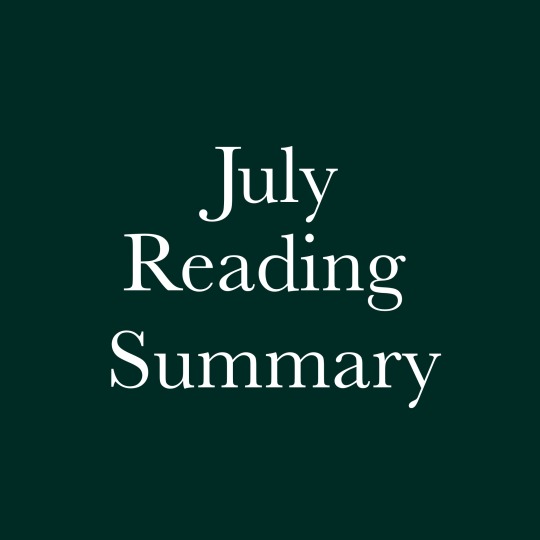
View On WordPress
#a deceptive composition#a grave robbery#an artless demise#annafromuni discussions#black silk and sympathy#Crime Fiction#crime mystery#discussion post#Historical Fiction#historical fiction adventure#historical fiction murder mystery#historical fiction mystery#july books#july reading summary#modern classics#monthly reading recap#monthly reading summary#mortal arts#NZ Fiction#on call#pasifika fiction#pasifika literature#reading summary#the book thief#the chestnut man#the hunger games#YA Fantasy
0 notes
Photo








While out on a morning jog, Moana throws on playlist of Hawaiian artists. The "comfort food for her soul," as she calls it, some voices to keep her company while living thousands of miles away from home.
We threw together a few songs we think Moana might enjoy on her morning playlist. What are your favorites? When living away from home, how do you combat homesickness?
#indigenous#readingclub#bookclub#books#bibliophile#pasifika#aesthetic#wanderlust#currentlyreading#academia#literature#readers of tumblr#bookish#tumblrreads#booklr#hawaiian#museum#california#moana#hawaii#lurlinewailanamcgregor#betweenthedeepblueseaandme#reading#kanakamaoli#nativehawaiian#booksofinstagram#bookstagram#igreads
18 notes
·
View notes
Text
Through moʻolelo, journal reports, and legal advocacy, two Kanaka Maoli added to an intellectual genealogy that continues on today. Read with us! 🤓
#bookclub#readingclub#igreads#bookstagram#booksofinstagram#indigenous#kanakamaoli#nativehawaiian#reading#booklr#tumblrreads#bookish#readers of tumblr#literature#academia#currentlyreading#wanderlust#aesthetic#pasifika#bibliophile#books#KanakaMaoli#UHManoa#UHPress#Indigenous#Pasifika#NativeHawaiian#Hawaii#OleloHawaii#Native
5 notes
·
View notes
Photo

📖 The Tower of Babel
"If you give less you will lose more and if you give nothing you will lose all."
Toa Qase is becoming a Modern Businessman, but in the process, loses focus of what it means to be a Tikong. When he acquires thousands of chickens and decides against sharing any of them with his friends or family, they take matters in to their own hands and steal the chickens away from him. 🐓
Hau’ofa writes “A well-bred Tikong gives generously to his relatives and neighbors, especially one with thousands of earthly goods.” Toa could have escaped his fate if he was a little more generous with what he had. 💸
Have you ever learned the lesson of generosity the hard way?
#talesoftikongs#epelihauofa#tongan#fijian#igreads#pacificliterature#satire#shortstories#bookstagram#booklr#tumblrreads#bookish#readers of tumblr#literature#academia#currentlyreading#wanderlust#aesthetic#pasifika#bibliophile#books#bookclub#readingclub#indigenous
3 notes
·
View notes
Photo

📖 Blessed are the Meek
“[Puku] built on a corner of his father’s land a traditional thatched house that was traditionally small, traditionally dark, and traditionally damp, a traditionally appropriate abode for a man of his lowly station.” 🏠
The word “traditional” carries a lot of weight. On the one hand, it could mean "well-established," but on the other, it could mean “outdated” or "archaic." The above quote is a comment about a man who has been pushed away from all possibility of success in life and is now left with these "traditional" belongings and ideas. 💸
When you do a Google Image search on islands in the South Pacific (ex. Fiji or Tonga), you see pictures of white sandy beaches and maybe a collection of grass shacks along the water. What does this mean for the definition of traditional that outsiders have in their minds? Reminder: ‘Iolani Palace in Hawai'i had electricity before the White House. 🏰
Keeping with tradition does not mean abandoning all aspects of modernization, and the definition of "traditional" can change entirely based on who is talking. How do we push back against a one-sided view of tradition? 📝
#indigenous#readingclub#bookclub#books#bibliophile#pasifika#aesthetic#wanderlust#currentlyreading#academia#literature#readers of tumblr#bookish#tumblrreads#booklr#bookstagram#shortstories#satire#pacificliterature#igreads#fijian#fiji#tongan#tonga#epelihauofa#talesoftikongs#reading#kanakamaoli#nativehawaiian#booksofinstagram
1 note
·
View note
Photo
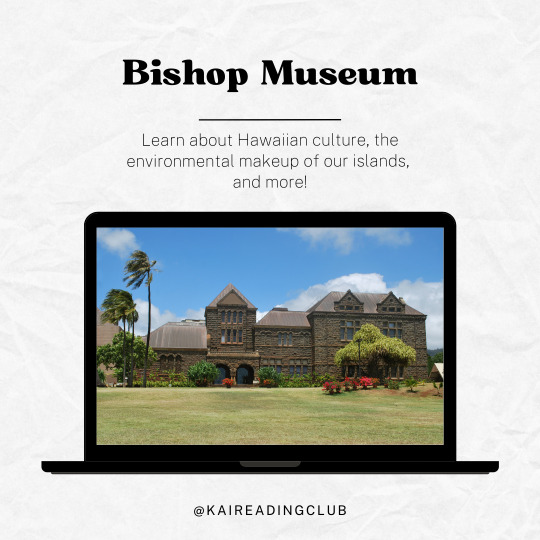
One of the more educational spots to visit in Hawai'i is the Bishop Museum! Located in Kapālama, this museum hosts a multitude of exhibits—you can visit the planetarium, the Science Adventure Center, or the Hawaiian and Pacific Halls for some history of Kanaka Maoli in the islands. 🏔️
In Between the Deep Blue Sea and Me, Moana visits the fictional Knight Museum in Honolulu and discusses one of the artifacts being housed there. Museums themselves are fraught with racist and colonial foundations, which Moana attempts to bridge in both her personal and professional life. 📚
Have you visited the Bishop Museum in Hawai'i? What did you think of it? 🛫
#indigenous#readingclub#bookclub#books#bibliophile#pasifika#aesthetic#wanderlust#currentlyreading#academia#literature#readers of tumblr#bookish#tumblrreads#booklr#hawaiian#museum#california#moana#hawaii#lurlinewailanamcgregor#betweenthedeepblueseaandme#Bishop Museum#honolulu
1 note
·
View note
Photo
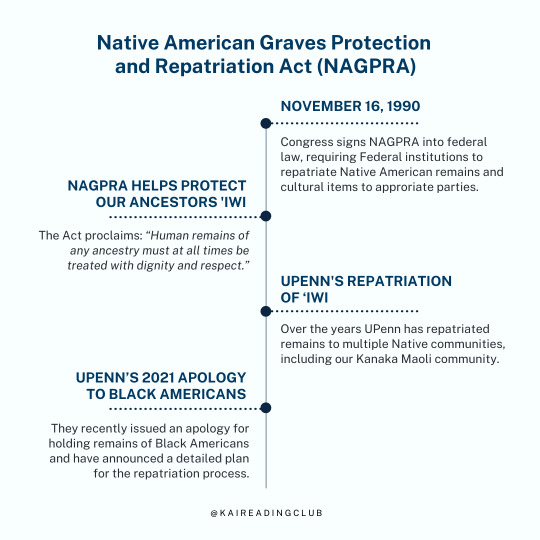
Have you heard of the Native American Graves Protection and Repatriation Act (NAGPRA)? It's a law put in place that says that "human remains of any ancestry must at all times be treated with dignity and respect." (NPS.gov)
This Act comes up frequently in conjuction with museums, and it is even mentioned in this book! One recent example of NAGPRA in action is at the University of Pennsylvania. Over the previous decades UPenn has repatriated remains to multiple Native communities, including Kanaka Maoli. (Penn Museum)
More recently, they issued an apology for holding remains of Black Americans and have announced a detailed plan for the repatriation process. (PennToday 2021) While repatriation is definitely a step in the right direction, these 'iwi should not have even been removed in the first place. Hopefully other institutions will follow suit!
Are you familiar with NAGPRA? What have you heard about it?
#indigenous#readingclub#bookclub#books#bibliophile#pasifika#aesthetic#wanderlust#currentlyreading#academia#literature#readers of tumblr#bookish#tumblrreads#booklr#reading#kanakamaoli#nativehawaiian#hawaiian#museum#california#moana#hawaii#lurlinewailanamcgregor#betweenthedeepblueseaandme#nagpra#native american graves protection and repatriation act
0 notes